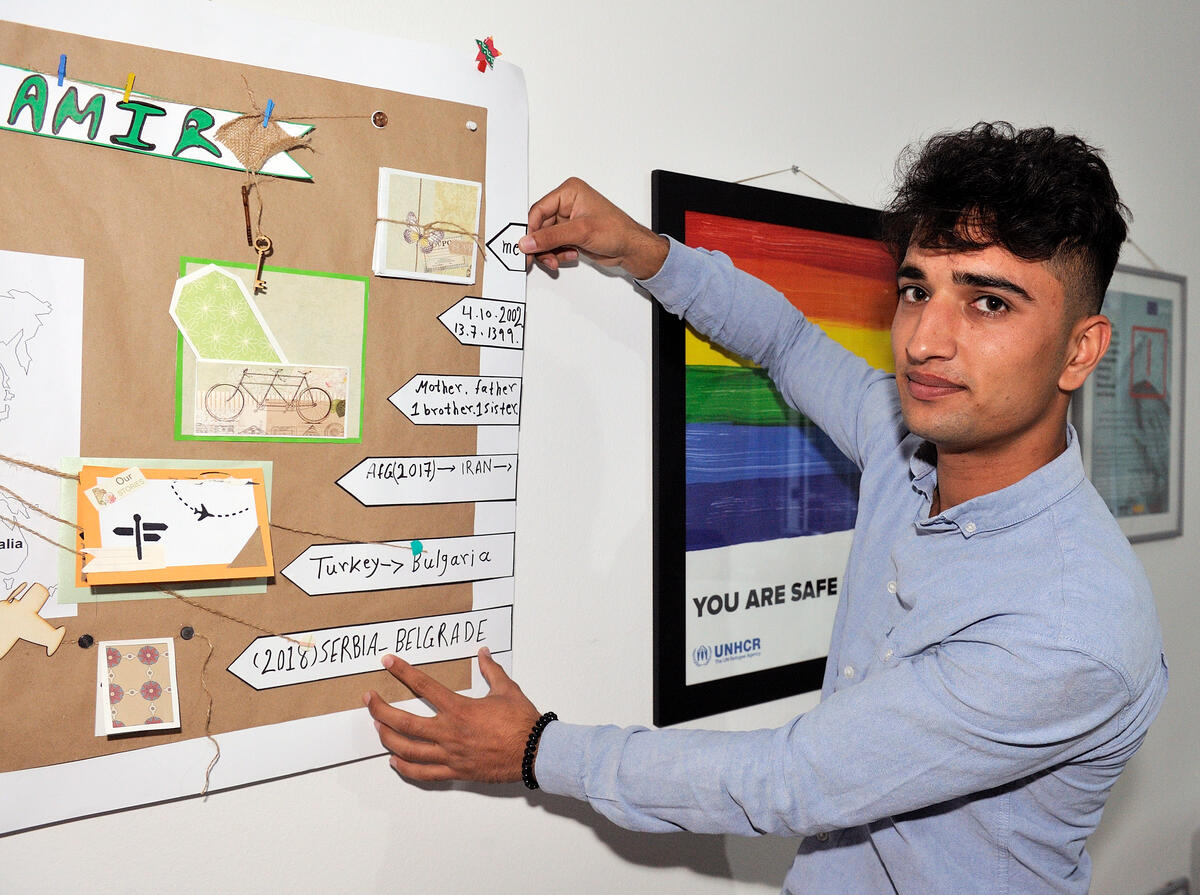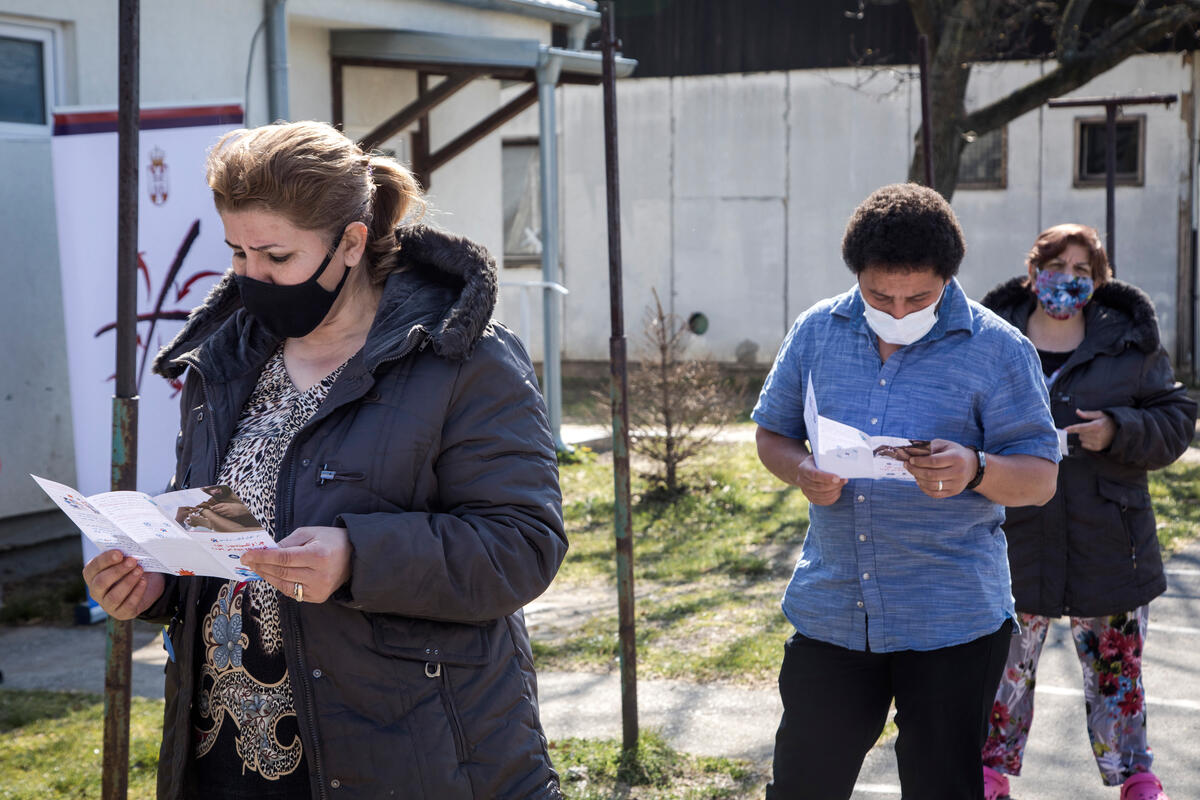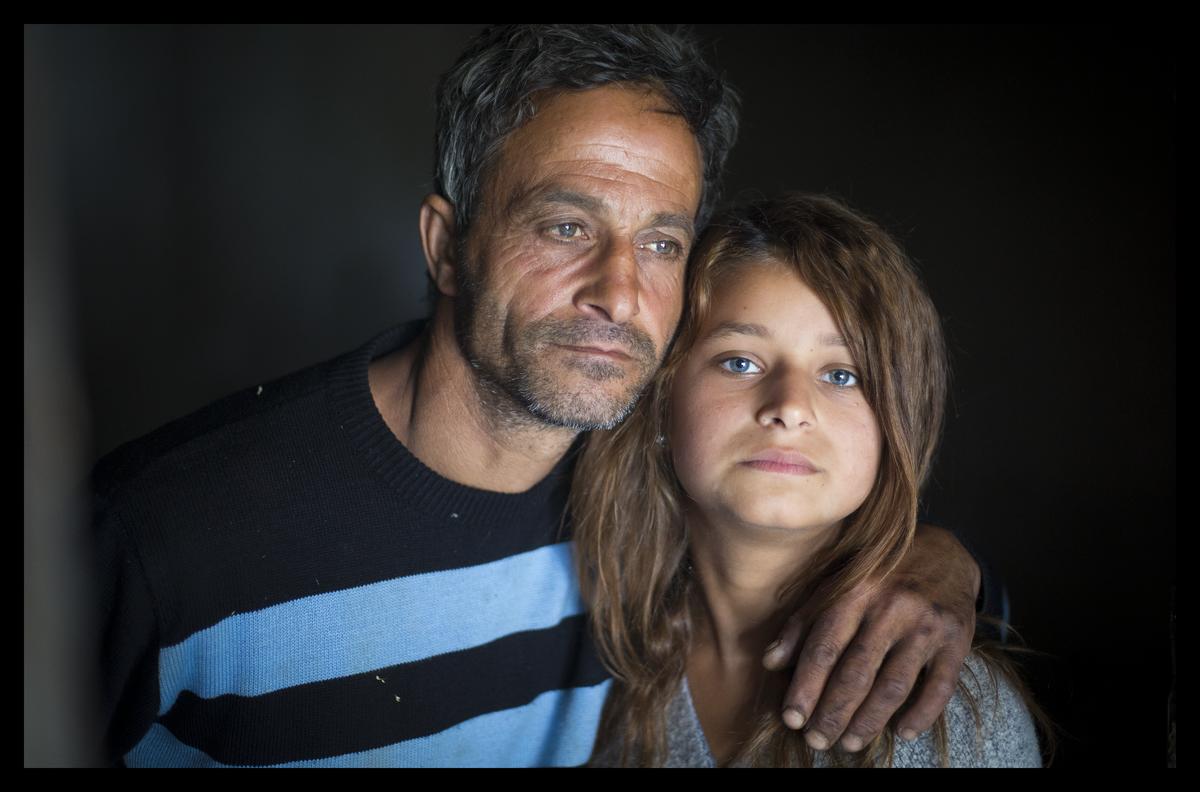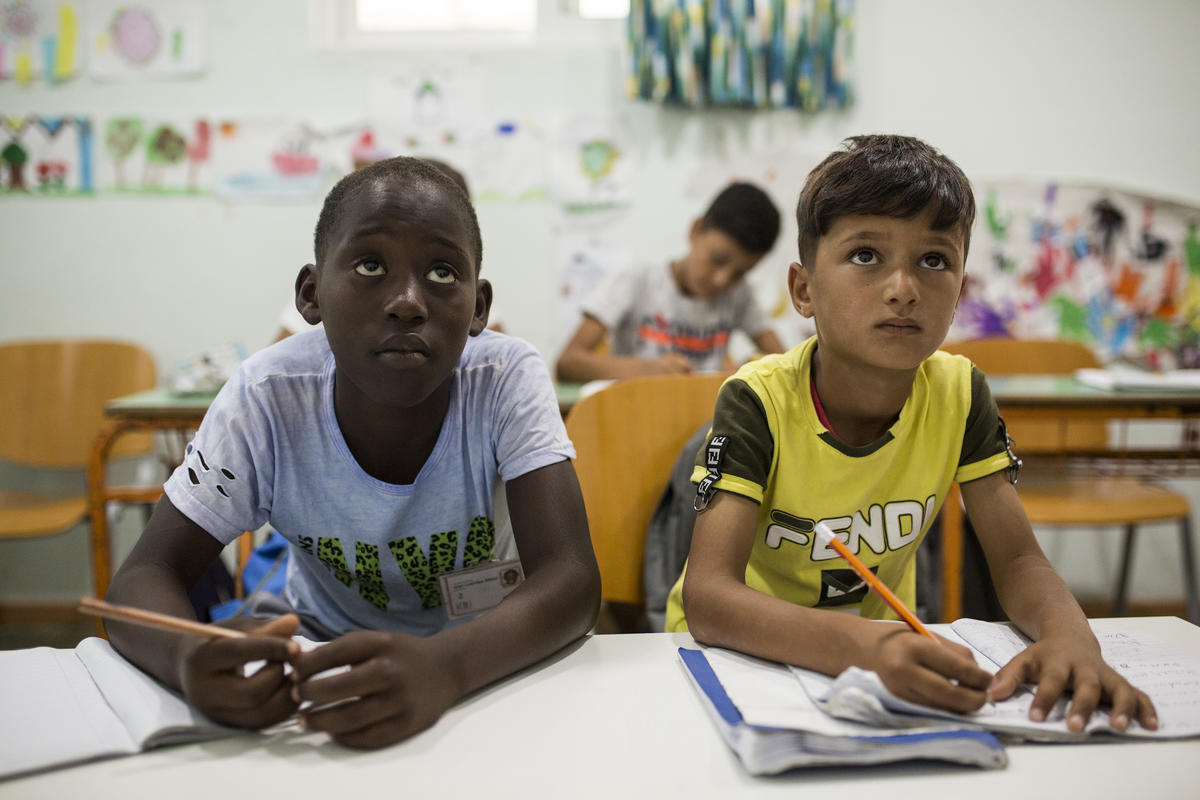Kosovo Crisis Update
Kosovo Crisis Update
The Exodus
The first of tens of thousands of people trapped in a muddy no man's land between Kosovo and Macedonia began moving to a newly established centre overnight Sunday where they will receive food, medical assistance and shelter for the first time in several days.
The operation began unexpectedly, in the dead of night late Sunday when Macedonian authorities sent 11 buses without any warning to the site near the border crossing of Blace where as many as 65,000 people have remained trapped in appalling conditions.
In the first several hours, 2,000 people were bused to the transit camp at Brazda five kilometres away. The camp eventually will be able to process as many as 100,000 people at any one time. The site has three tented areas: in the first refugees will receive an initial food ration, the second area is for registration and the third area is for accommodation where refugees will stay temporarily before moving on to other locations.
The refugee population at Blace itself remained stable at approximately 65,000 people. Though several thousand left, another train carrying an estimated 4,000 people arrived there on 4 April in the afternoon from the Urosevac area of Kosovo. Refugees earlier had reported Serbian authorities were systematically emptying Urosevac after making the province capital of Pristina a 'ghost town.'
The chaotic situation continued not only at Blace but at other places along the Macedonian border. At the nearby Jazince crossing, authorities continued to have just a single registration table, slowing the clearance procedure to a crawl. At one point, frustrated refugees were involved in a stampede and there were several reported injuries. For several days, arriving refugees had alternated between the two crossings, trying to anticipate which was the quickest point of entry.
A total of 1,200 people entered the country at a third point at Lojane.
Weather conditions eased in Albania and an increased relief effort improved the general situation somewhat.
At the main Morini border crossing nearly 20,000 people arrived in a 24 hour period ending late Sunday night and a further 4,500 Kosovars entered at Qafa Prushit, bringing the cumulative figure since March 24 to 226,000 people in Albania.
Up to 100,000 people had left the Kukes region for other parts of the country by Monday morning, many of them riding on tractors with small trailers.
The number of non-governmental agencies on the ground in the border region increased, and, under the coordination of UNHCR, they are now providing specialist help with water, food, sanitation and health facilities. A total of 120 metric tons of food arrived Sunday by truck and helicopter, and food was being distributed at the entry points around Morini.
Authorities also continued to open new collective centres and a total of 34 now host an estimated 22,000 people. Few are now forced to spend the night in the open as was the case earlier in the crisis.
The situation at Qafa Prushit remained critical. There was little water and no sanitation facilities, greatly increasing the chances of epidemics. A school being used as a transit centre one kilometre away from the border was overcrowded, and many traumatized refugees were in poor condition. Because of virtually impassable roads, it was impossible to get trucks to the area to evacuate the arrivals.
Help on the way
Some 90 extremely vulnerable refugees were scheduled to be flown out of Skopje later Monday aboard a Norwegian airforce C130 transport - the first Kosovars to be evacuated by a third country. Norway has offered to temporarily host 6,000 people and the European Union will accommodate 20,000 Kosovars - 10,000 in Germany and the rest in other member states.
Canada said it will host 5,000 people, Turkey will take 20,000 and the United States and the United Kingdom an undetermined number each.
UNHCR is working closely with governments and the International Organization for Migration on the details of the upcoming transfers.
On Tuesday, UNHCR will hold an emergency meeting in Geneva and invited 56 nations and many international organizations to discuss the crisis.
High Commissioner Sadako Ogata will chair the meeting of the Humanitarian Issues Working Group which was established in 1992 as a forum to discuss the humanitarian situation in Bosnia and Herzegovina at the time. When the Dayton Agreement was signed, this working group came under the umbrella of the Peace Implementation Council, the body charged with overseeing progress under Dayton.









